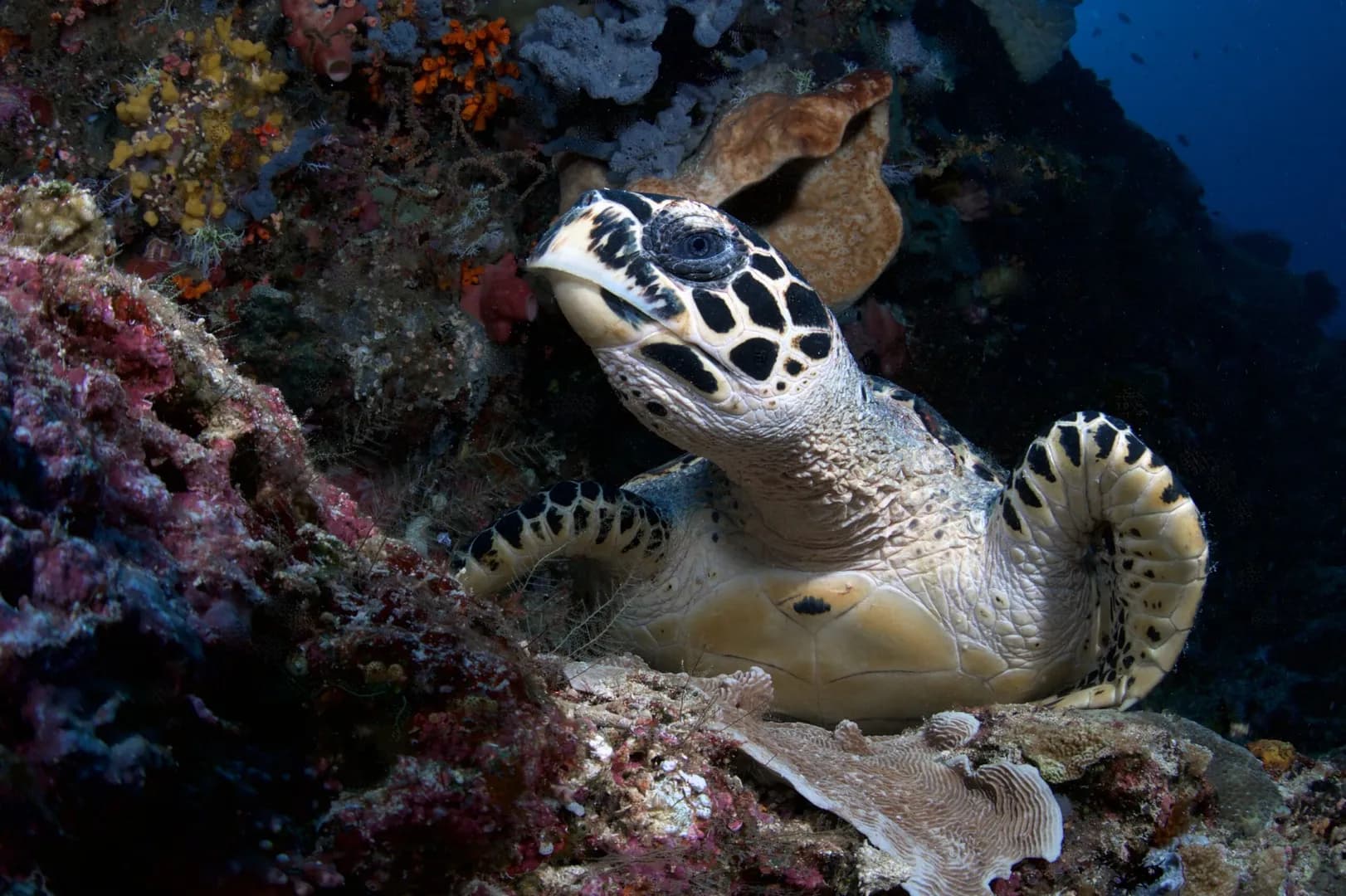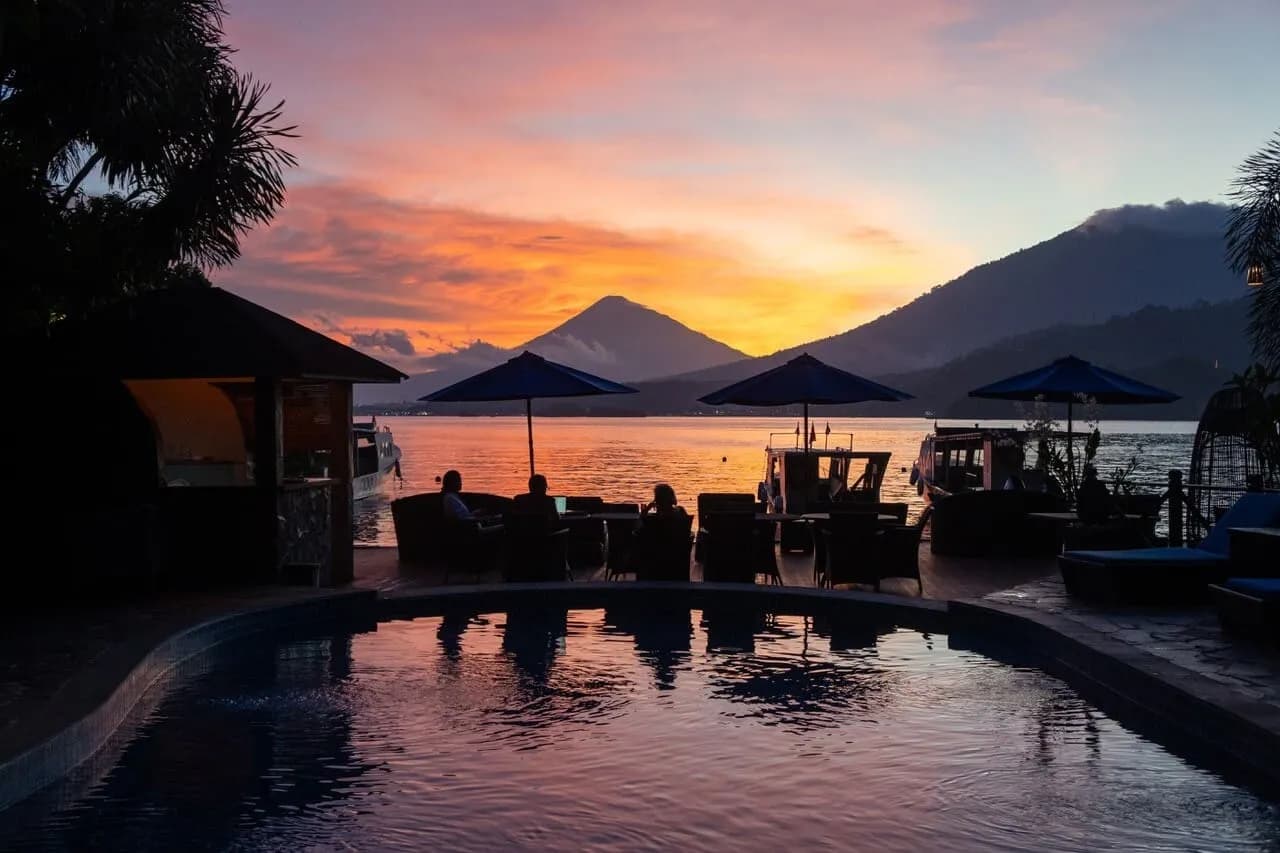Wildlife of Lembeh – Meet the Critters in Lembeh Resort
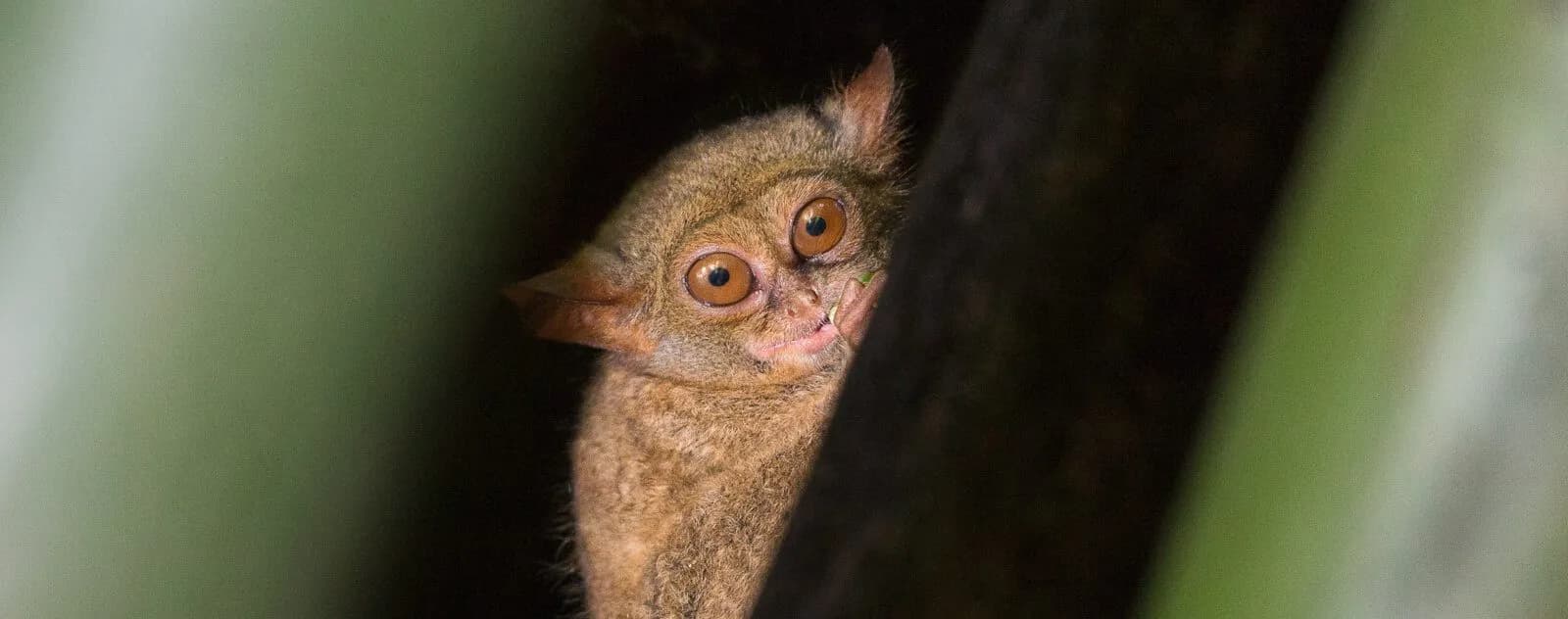
The underwater critters that reside in the Lembeh Strait are world famous among divers and underwater photographers but how much do you know about the wildlife and critters that we have in Lembeh Resort? Our mature tropical rainforest gardens provide natural, well tended habitat for all manner of terrestrial critters from the tiny tarsiers which reside in the trees (see title image above) through to exquisite insects, butterflies, birds and reptiles.
We highly reccommened taking a stroll through the central low-lying garden as well as taking a look at the shrubs which grow up either side of the banks of the resort – take your time checking out the flora and you never know what you will see looking back at you! If you’d like to see any of the wildlife species below our gardeners are excellent at knowing where to find things so just let us know.
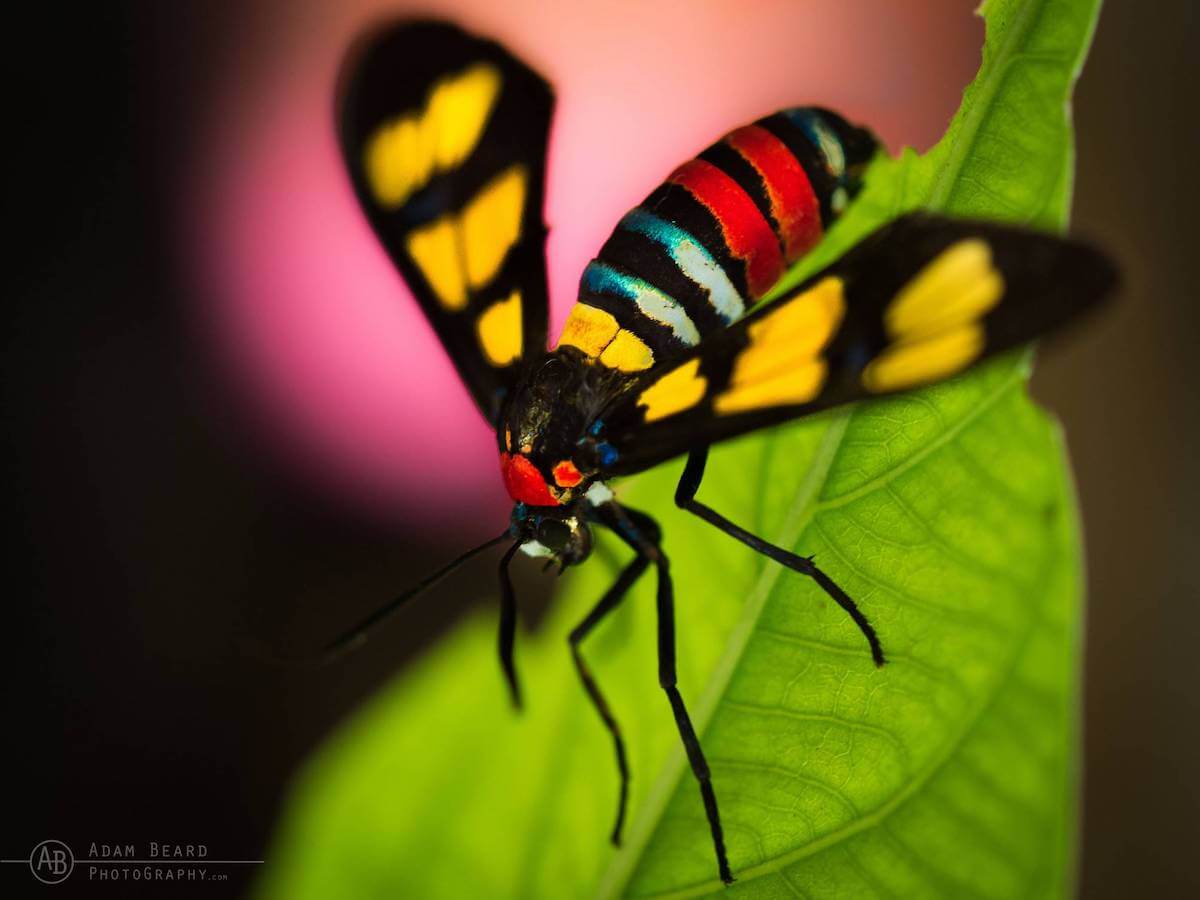
The colorful Forester Moth has a highly distinctive wasp-like body shape
Sulawesi Forester Moths (Zygaenidae Sp.)
Zygaenidae moths are a species from the family of Lepidoptera. The majority of zygaenids are tropical, but they are nevertheless quite well represented in temperate regions too. Some of the 1000 or so species are commonly known as burnet or forester moths (such as this one which we find in Lembeh Resort) and they are also sometimes reffered to as “smoky moths”.
We typically see the forester moth during the day time when it comes to rest on tree branches and flowers or when it is flying with a characeristically slow, fluttering action. They generally have a metallic sheen, often prominent spots of red, blue or yellow and clubbed antennae. The bright colours are a warning to predators that the moths are distasteful – they contain hydrogen cyanide (HCN) throughout all stages of their life cycle. Unlike most insects with such toxins, they obtain glucosides from the plants they utilize so that HCN can be used as a defence. However, they are capable of making HCN themselves, and when in an environment poor in cyanide-producing plants, they will synthesize it themselves. They are known to have mimicry complexes based on these toxins.
This species is easily recognizable by both its bright colors and wasp-like abdomen shape.
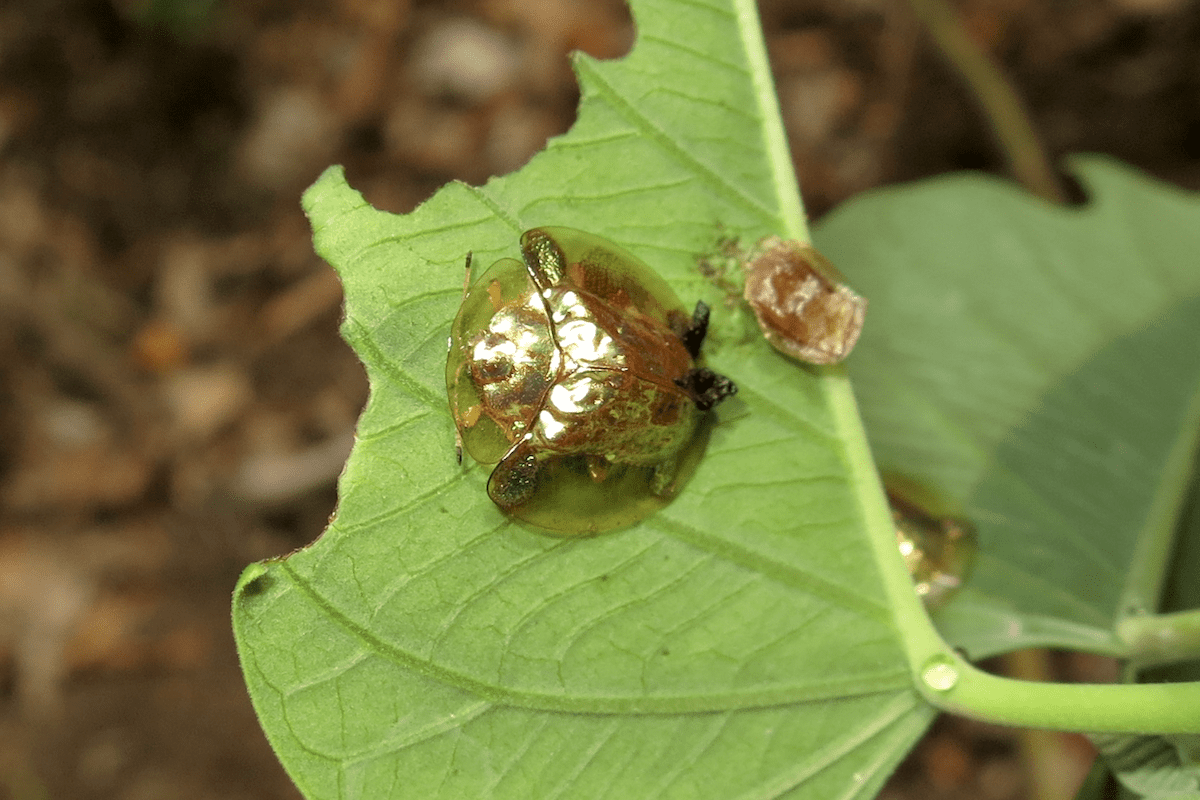
The Gold Beetle is an exquisite species which can be found on several shrubs around the resort
Tortoise Gold Beetle (Aspiomorpha sanctaecrucis)
These exquisite critters are Aspidomorpha sanctaecrucis tortoise beetles. They take their common name from their tortoise-like shell which they can pull down, and hold down firmly to the surface of a leaf, thereby thwarting the attention of predators such as ants. The second part of the Latin or scientific name means “holy cross”, because an overview of the top of the shell looks as though the beetle is splayed out on a cross.
One of the best places in the resort for spotting these beautiful critters is on the underside of the shrubery leaves in front of room 4 – ask one of our gardeners or resort staff to show you where to look as they know exactly where to find them!
Tortoise beetles are a very attractive gold color and some species can change color very rapidly when disturbed by adding or removing liquid from immediately under their shell. Our gardeners often cite this species as being one of the most beautiful wildlife species in our gardens.
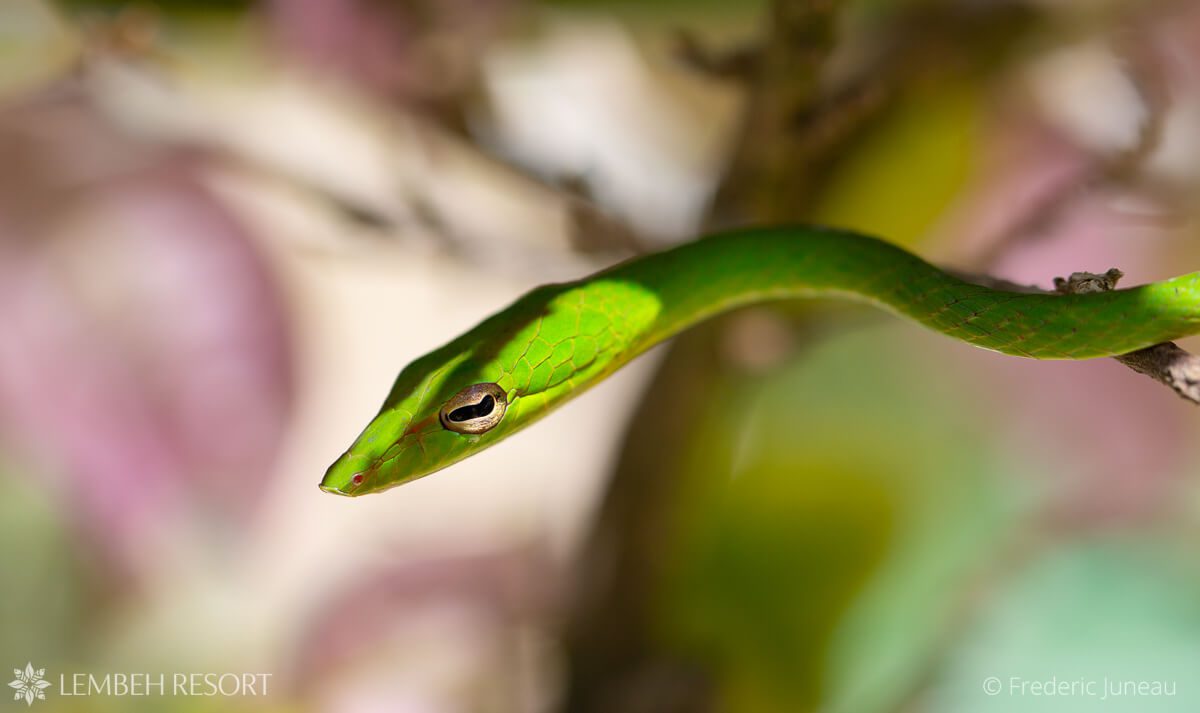
FTYUUU
Asian Vine Snake (Ahaetulla prasina)
The Ahaetulla prasina is a species of snake in the family Colubridae which is native to southern Asia. Its common names include; Asian vine snake, Boie’s whip snake, Gunther’s whip snake, and Oriental whip snake. Here in North Sulawesi this species is known by its local name of “Ular Kelapa” which translates to “coconut snake” – probably because it is often found around or in coconut palm trees.
The body form of this snake is extremely slender with a long, pointed, projecting snout. Adult colouration varies from light brown to dull yellow-green and often a startling fluorescent green like this one pictures here. If you are not a fan of snakes you can rest assured that this species is extremely docial and it will make a quick getaway into the shrubbery if it detects people in the area. You have to be lucky and quick sighted to spot one in resort. This species is not a threat to humans and it feeds on small reptiles and amphibians, particularly lizards and tree frogs.
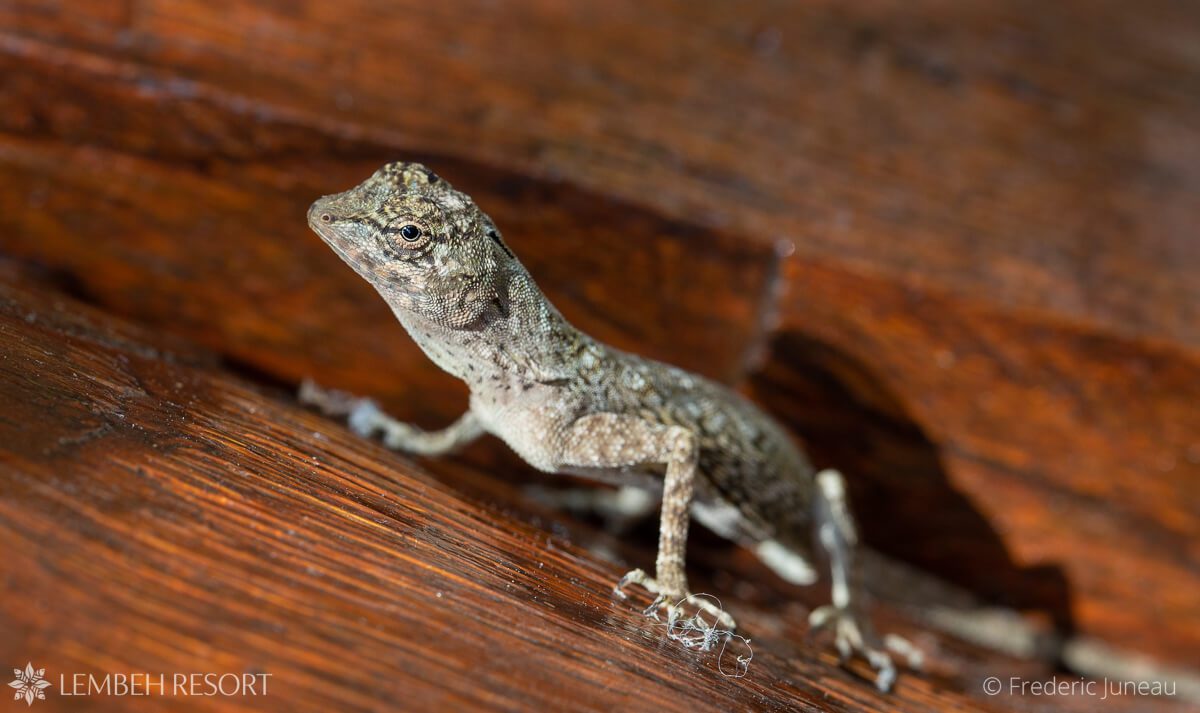
The flying lizard is a wonderful find in the resort – and they really do fly!
Flying Lizard (Draco volans)
Flying wildlife! Also known as the common flying dragon, this special species of lizard is endemic to Southeast Asia. Like other members of the genus Draco, this species has the ability to glide using wing-like lateral extensions of skin called patagia. Flying lizards grow up to 22 centimeters in length, including the tail. The body is tan in color with dark flecks. The patagium of the male is tan to bright orange with dark banding whereas the female’s patagium has more irregular markings.
Did you know that this species is considered a passive glider, or parachutist? Previous studies have also shown that it can be considered a gliding animal which means that it doesn’t have to deal with the aerodynamic and metabolic imperatives required for active flight. Flying lizards are diurnal and they are most commonly seen running along branches, displaying and gliding. Flying lizards are exclusively arboreal so it was very unusual to spot this one on our Photo Center!
Flying lizards are harmless and feed mainly on ants and other small insects, which they can find in abundance in the Lembeh Resort gardens.
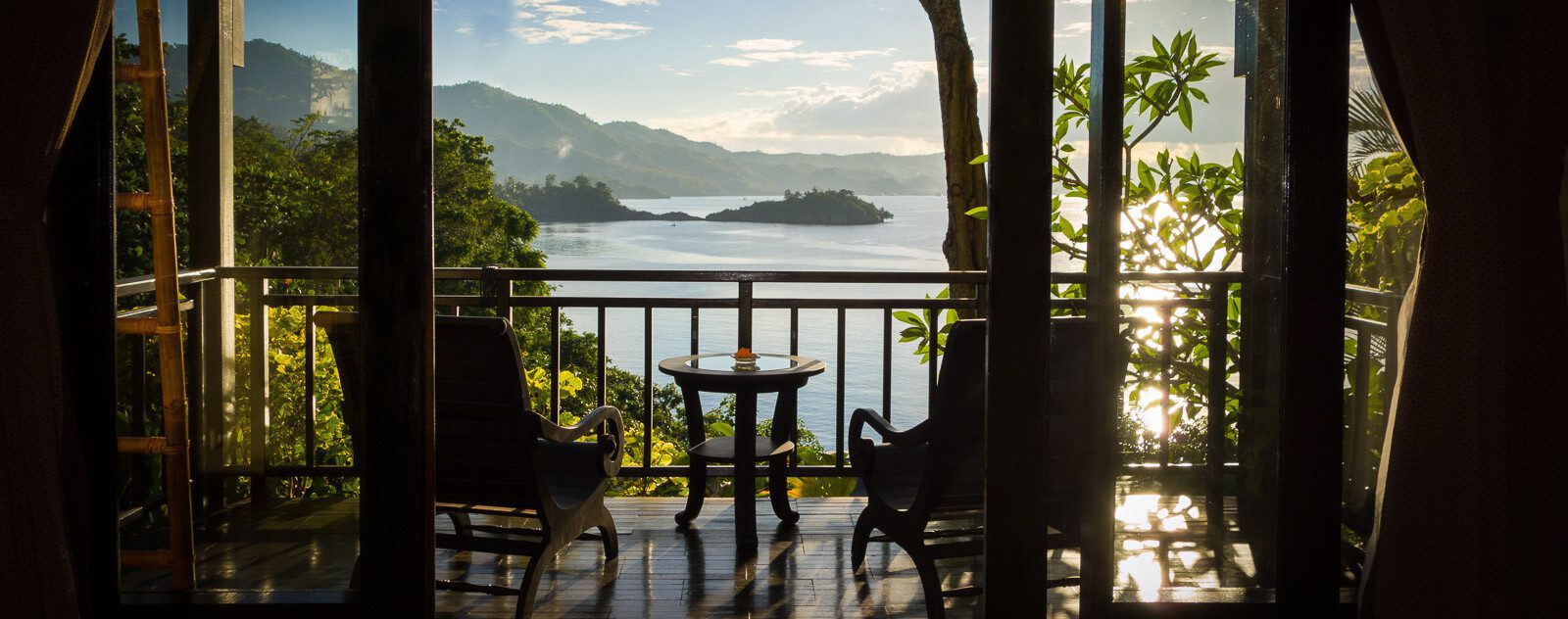
Enjoy stunning views over the Strait at Lembeh Resort
Staying at Lembeh Resort
Lembeh Resort’s secluded location on Lembeh Island ensures you enjoy an exclusive and relaxing stay. Tropical gardens, incredible wildlife and exotic flora form a natural backdrop while luxury and elegance come as standard.
Experience the warm hospitality, tropical beauty and unique wonders of this tasteful home away from home in Lembeh. Your expectations will not only be met, they will be exceeded.
We offer three accommodation options (Garden View Rooms, Luxury Cottages and the Cliffside Suite). All accommodation is full board with three exquisite meals a day including a la carte dining in the evenings. Our team of professional chefs can cater for special dietary requirements and requests.
Stay with us at Lembeh Resort, discover the wildlife of North Sulawesi and experience Lembeh with a touch of luxury.


